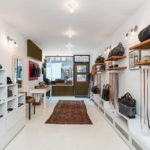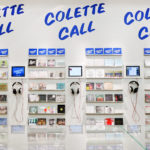Pop-up shops are a viable retail trend and win-win solution for both brands and consumers. The ready availability of temporary retail space permits everyone — from established wholesalers, to web-based brands, to crafters ready to turn pro — the new ability to dip a toe into the wonderful world of retail. However without prior bricks & mortar experience, it can be easy to make the mistake of project planning with a too-narrow focus. While the original impetus to launch a pop-up might be to generate buzz, jumpstart high-margin sales, or create a splashy new product launch, it’s important to consider beforehand all the benefits of a pop-up presence. Knowing what kind of intelligence you can realistically glean from an ephemeral retail presence will help you get the most out of this project.
So what data can you gain for your own pop-up store? Lots.
Consumer metrics. Online surveys and peer reviews (think Amazon or Yelp) provide valuable insight, but is that the insight you need? More often it’s important to know why a product isn’t selling rather than what’s right or wrong about the SKU that did sell. And since customers don’t provide feedback on products that they haven’t purchased, the only way to find out why red is outselling blue is to be on the sales floor with a trained-to-analyze sales staff as your extra eyes and ears on the ground.
Customer acquisition. A purchase ends when a customer puts away their debit card. But years of marketing, dialogue and potential sales begins when an email is captured. It’s very easy to click away a “sign up here for our newsletter” box online, but quite difficult to refuse a friendly sales associate who offers a discount or other incentive in exchange for email & demographic information.
Regional demographics. Raw sales are very narrow parameter of a SKUs success. In the current retail paradigm, launch a new range in five test market retail doors and you’re relying on the retailer’s data, usually a sell-through report issued a week after then fact. Brands receive no information on external contributing factors (foot traffic, weather, economy, relative brand positioning), no access to consumer engagement (reaction to price, packaging, merchandising), and limited info on the sales that do happen. But launch five pop-ups in five varied regions and you’ll be able to survey first-hand holistic results.
Successful strategies for cultivating brand loyalty. Think of your brand like a debutant at a coming out ball. Pop-up shops are a formal introduction of your brand to you customer, so it’s important to make a more meaningful statement than “Welcome! Here are some products on a shelf.” Take this opportunity to educate your customer about your corporate giving program, the story behind your logo, the rich heritage of your brand or provide a memorable retail experience.
Consideration given to these priorities in the pre-production stages of your pop-up store will help you build your systems and campaigns (POS reporting, social media, B2C marketing) to support not just sales, but also valuable data.
Gentry Lane helps brands maximize profits and minimize risk for their pop-up projects. She is also the CEO/Founder of Le Pop Up, a 3000-sq. foot “Retail as a Service” permanent pop-up boutique opening in vibrant Downtown LA in Spring 2014.
- 5 bonnes raisons d’ouvrir un Pop-Up Store pendant Noël - décembre 10, 2017
- Comment ouvir un Pop-Up Store? - août 21, 2017
- Storefront Guide: Pop-Up Stores et Showrooms dans le Marais - mai 22, 2017




